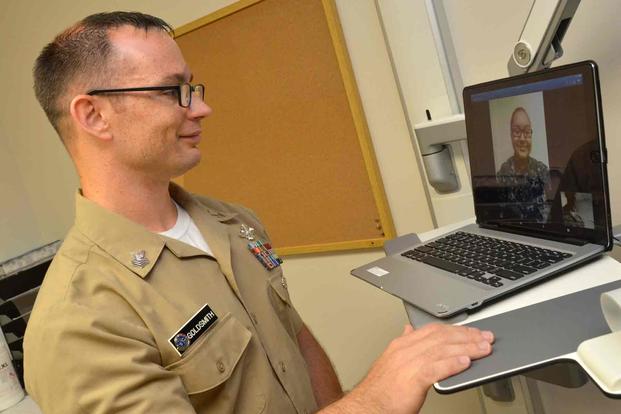A new phone app is aimed at making health care easier for some military beneficiaries.
Patients at five military health facilities will soon have access to the mobile app designed to improve their access to medical treatment, providing information on self-care, access to real time or scheduled virtual appointments, prescription management and more.
The digital platform is the foundation of a "new approach to health care" -- promising patients flexibility to manage their health in ways beyond scheduling in-person appointments or calling the Nurse Advice Line, Defense Health Agency Director Lt. Gen. Telita Crosland said Monday during the annual meeting of AMSUS, the Society of Federal Health Professionals, in Oxon Hill, Maryland.
"I am focused on moving beyond today's metrics that are focused on volume," Crosland said. "I am focused on improving how we put value around all the care we deliver. I'm also interested in how we improve the system from our patients, for our patients -- all our patients."
In a short video demonstrating the platform’s capabilities, Rose, a service member with three children whose spouse is deployed, has symptoms of a urinary tract infection. She pulls up the "My Military Health" app on her smartphone and inputs her symptoms.
Using algorithms, a virtual assistant confirms Rose's suspicion that she has an infection. She uses the app to schedule a virtual appointment in short order, then speaks with a physician who confirms the diagnosis and sends a prescription to a pharmacy.
According to the video, the model is a new way to deliver care -- "individualized, accessible and efficient, moving beyond the traditional model that will rely on in-person visits rather than what makes sense for the patient and provider."
Over the coming months, the model will be introduced at Martin Army Community Hospital, Georgia; Naval Hospital Jacksonville and Eglin Air Force Base Hospital in Florida; and Naval Medical Center Portsmouth and Wright Patterson Air Force Base Medical Center in Ohio.
The change comes as the Defense Health Agency and military services are ramping up efforts to attract patients back to military hospitals and clinics after spending nearly eight years shedding them to private health providers in the Tricare network.
Military health system leaders at the AMSUS meeting said the strategy, which was meant to rein in costs and ensure that the system focused on treating military service members, did not effectively trim the Defense Department health care budget.
It also reduced patient volume to a point that providers in military hospitals were at risk of losing their professional skills.
At Walter Reed National Military Medical Center in Bethesda, Maryland, alone, the average daily patient load in 2023 was down 43% from the previous year, according to defense officials.
"Our provider force, both civilian and military, has shrunk too much, risking the hollowing of our MHS. … The situation has been years in the making based on assumptions that aren't true," Assistant Secretary of Defense for Health Affairs Dr. Lester Martinez-Lopez said during the conference.
The DoD launched an ambitious effort in December to entice at least 7% of patients who left to come back to military hospitals and clinics by Dec. 31, 2026.
Part of that effort involves providing patients better services and easier access to care, according to Crosland.
Crosland said the Defense Health Agency has worked with leaders at the facilities to roll out the model and will take into account patient input and experience as it introduces the system. In the beginning, the phone app will be available at the five locations for primary care and behavioral health.
The plan is to then adopt the model and the digital platform throughout the system, although Crosland said it could take three to four years to "turn the ship."
"We're going to make health care better and easier to access for our patients, because when we do that, the system will be better for the health care team," Crosland said.
The five sites will be building out the digital platform system over the next four to six weeks, she added.
Related: Denied Care, Deaths in Japan Result from Lack of Emergency Medical Services for American Personnel












